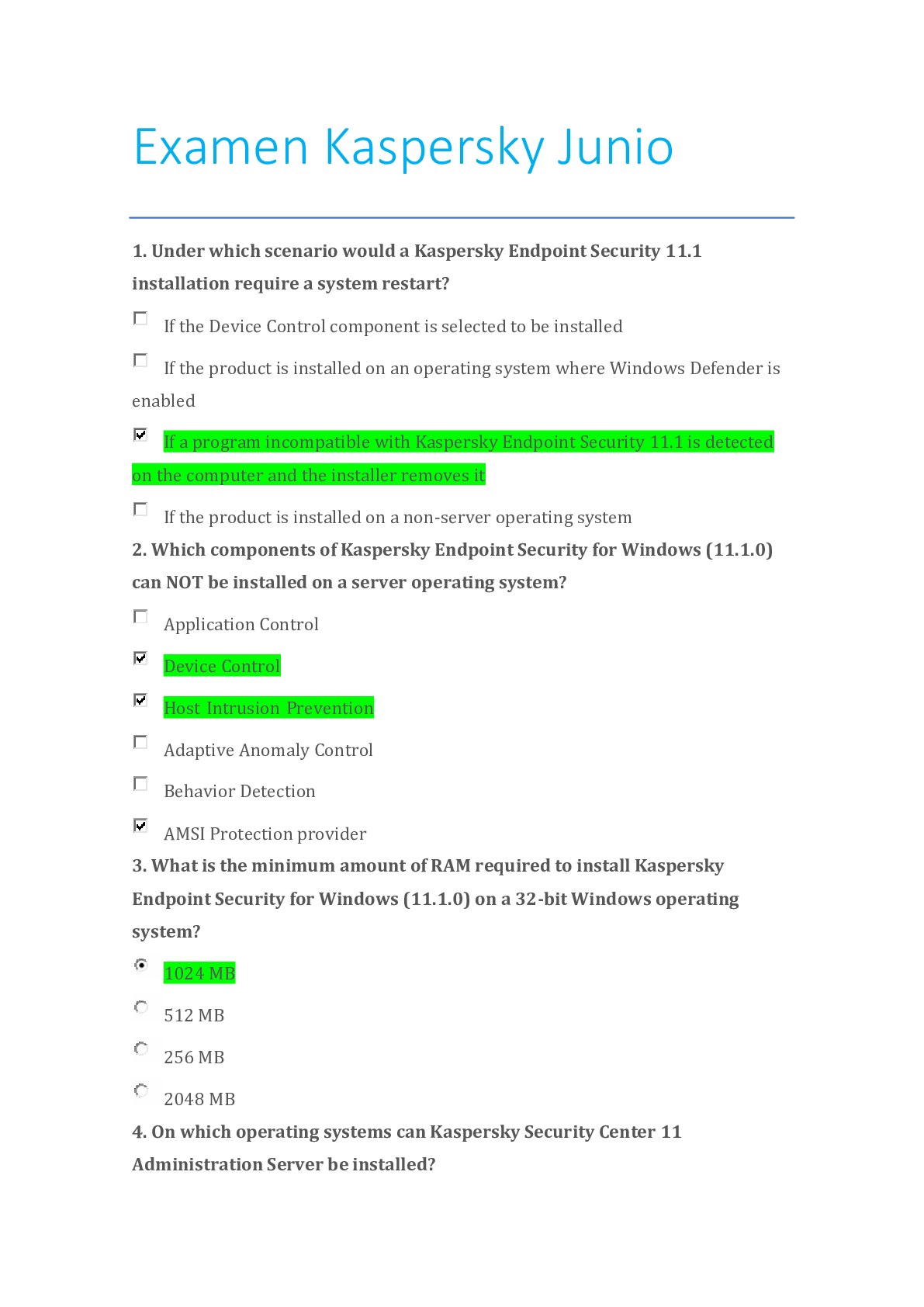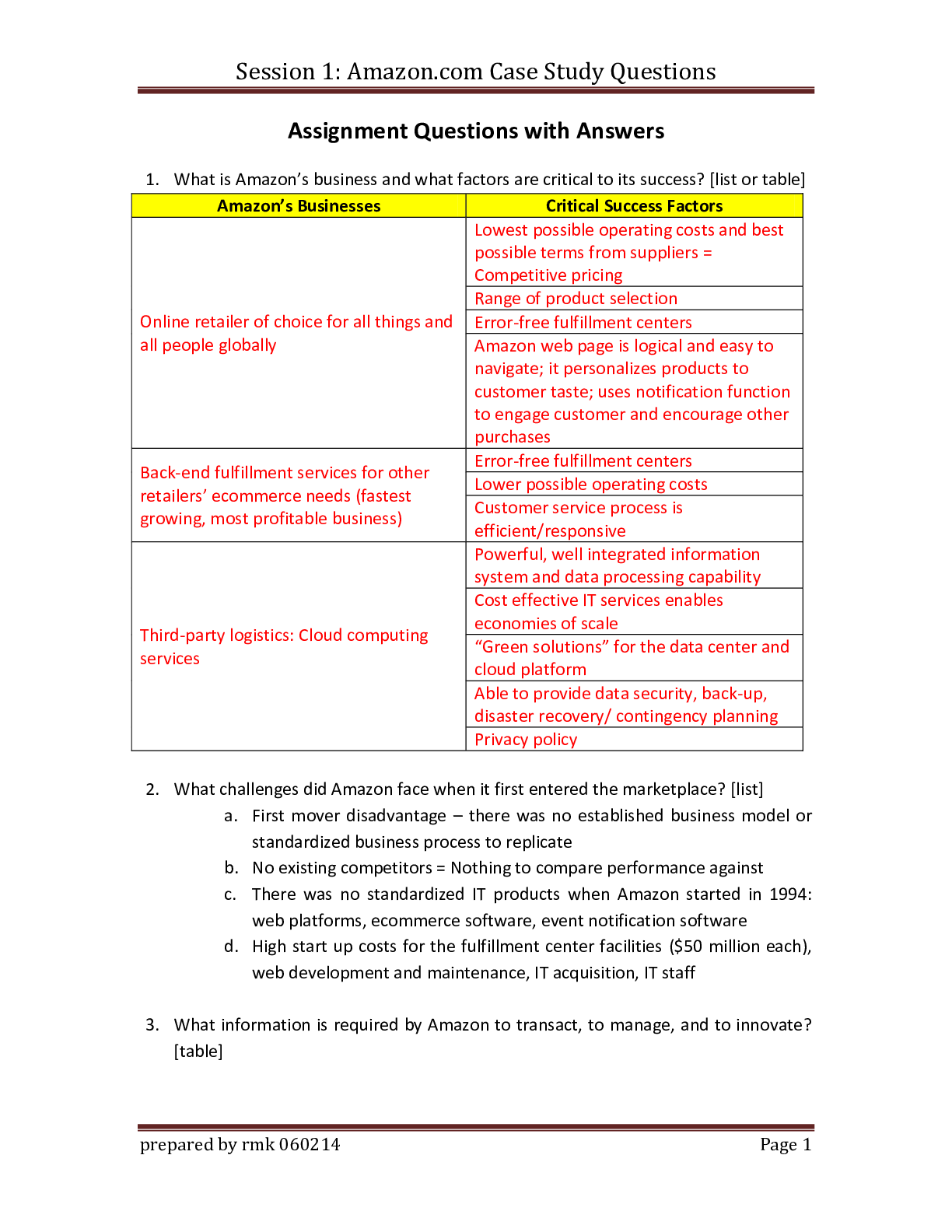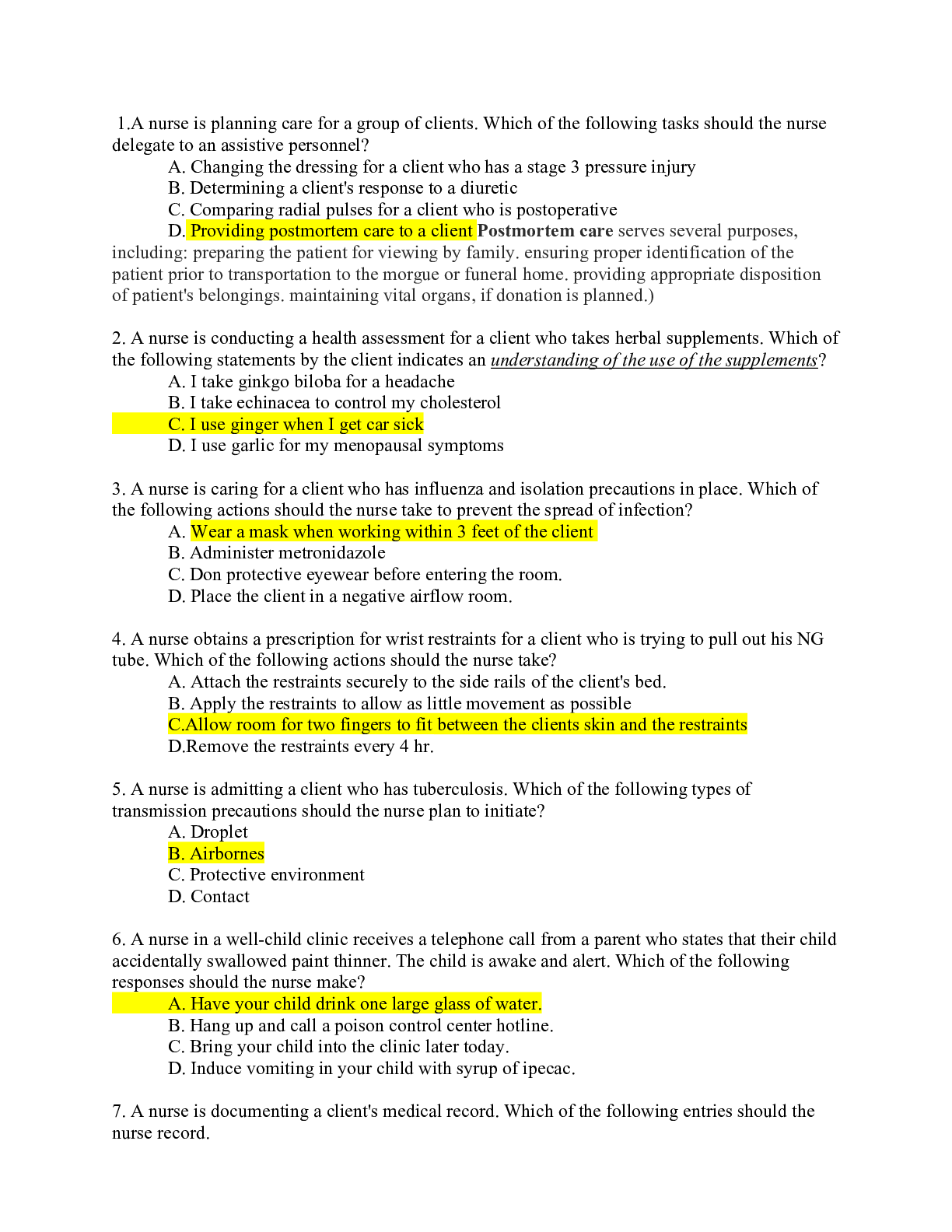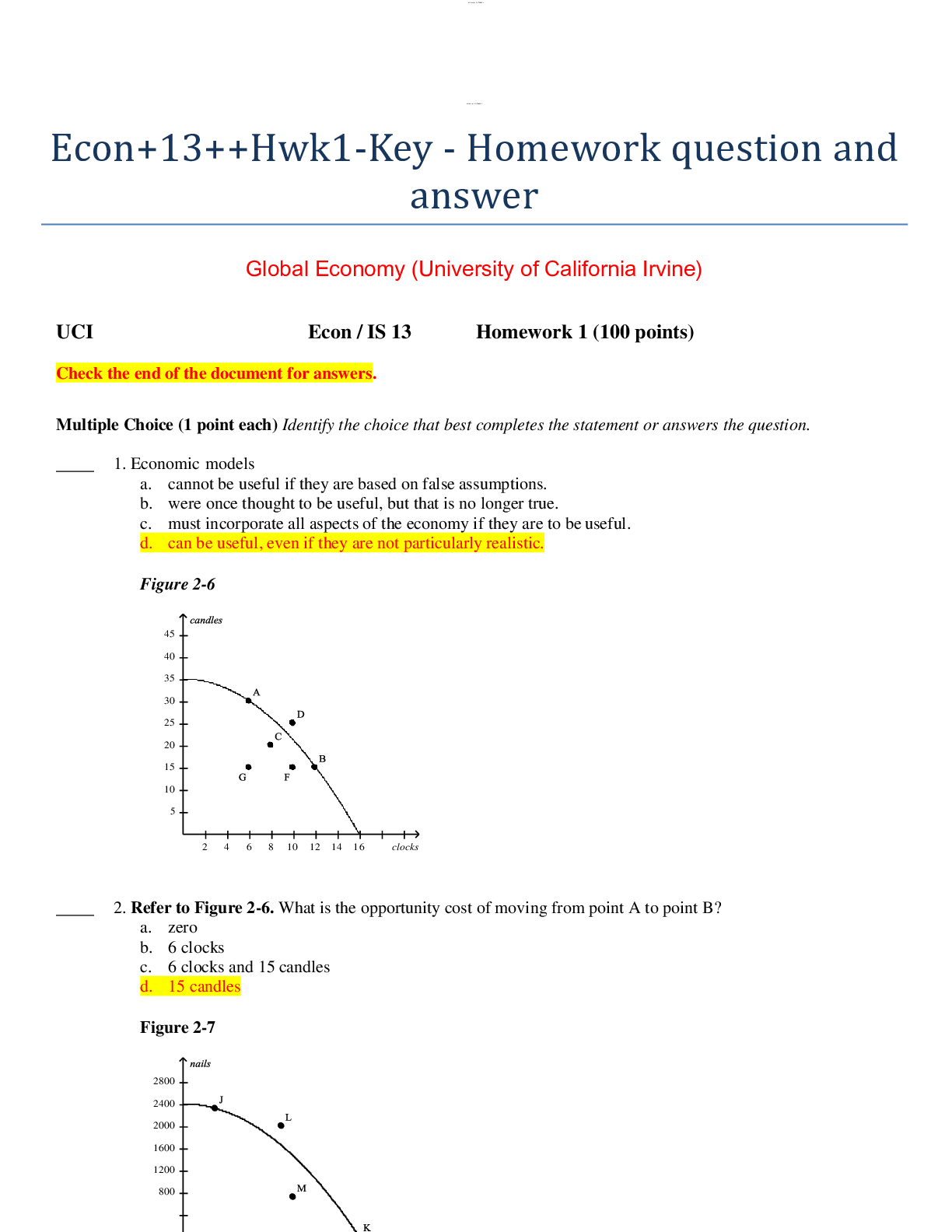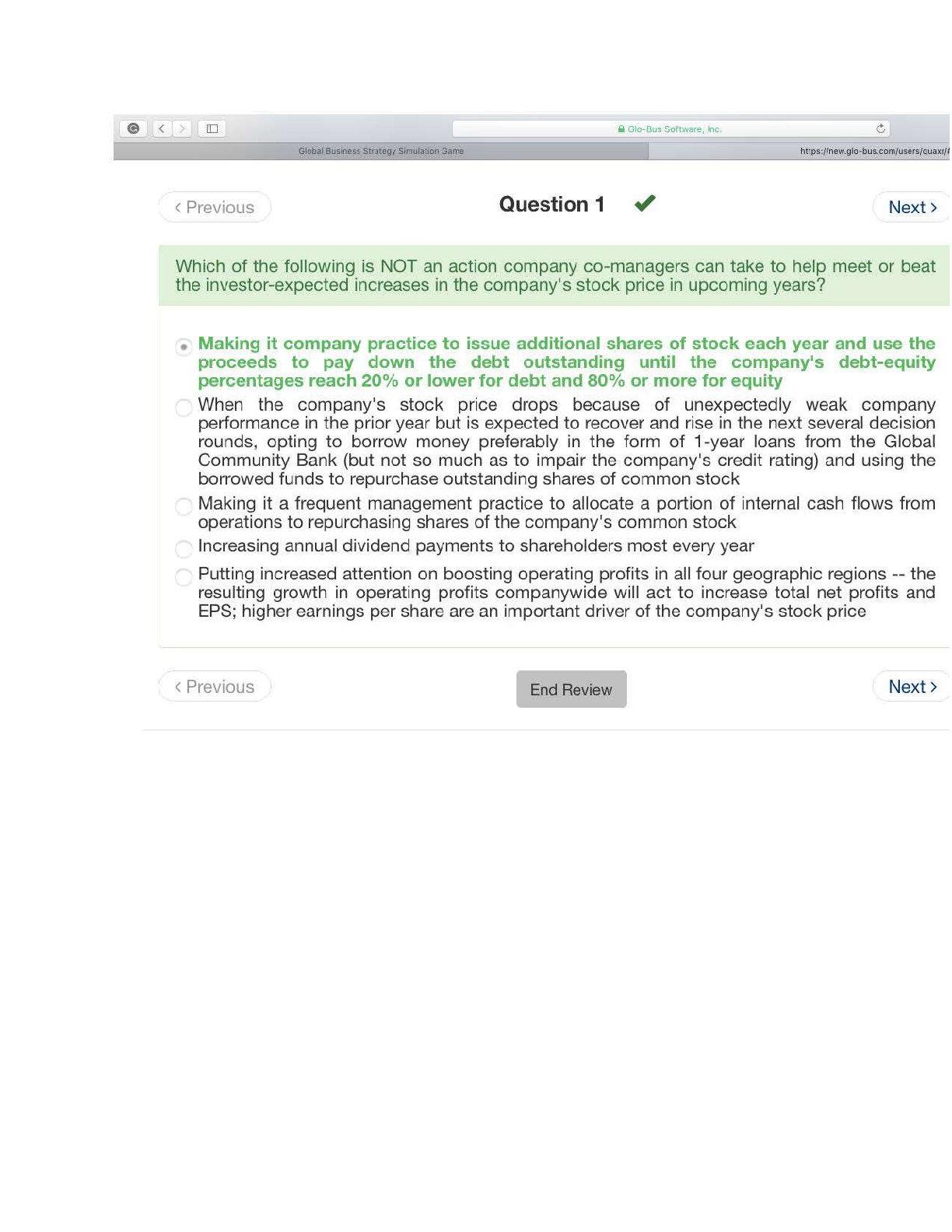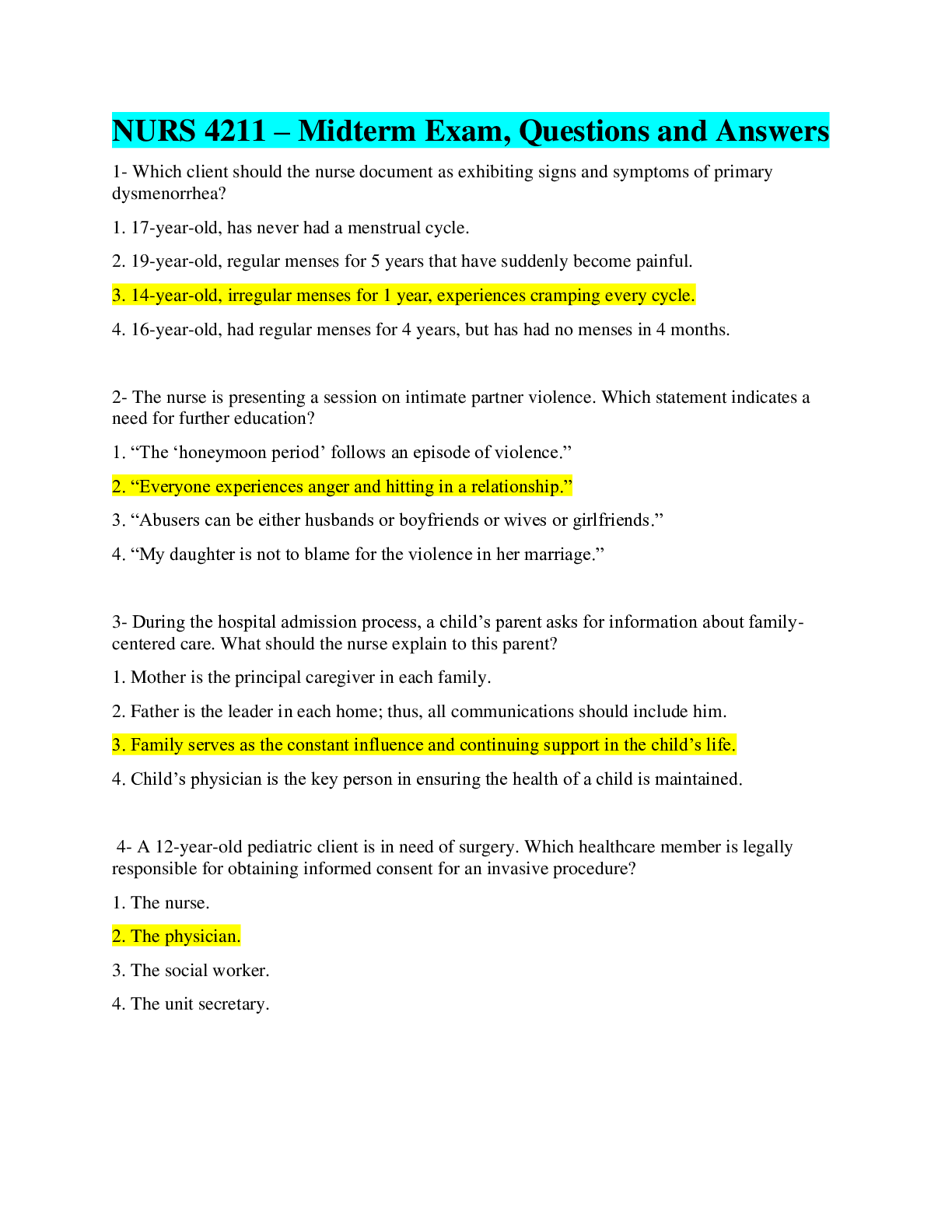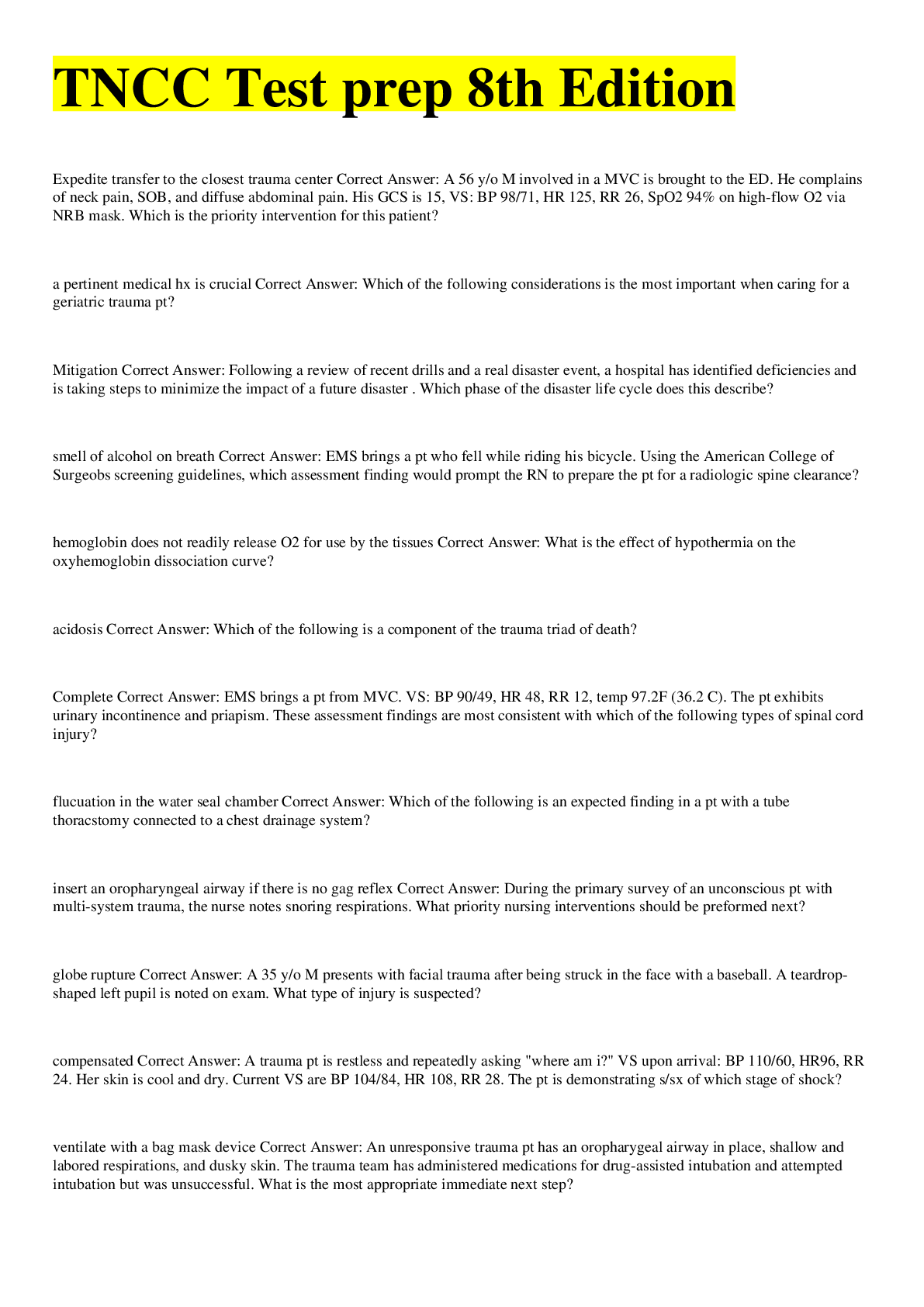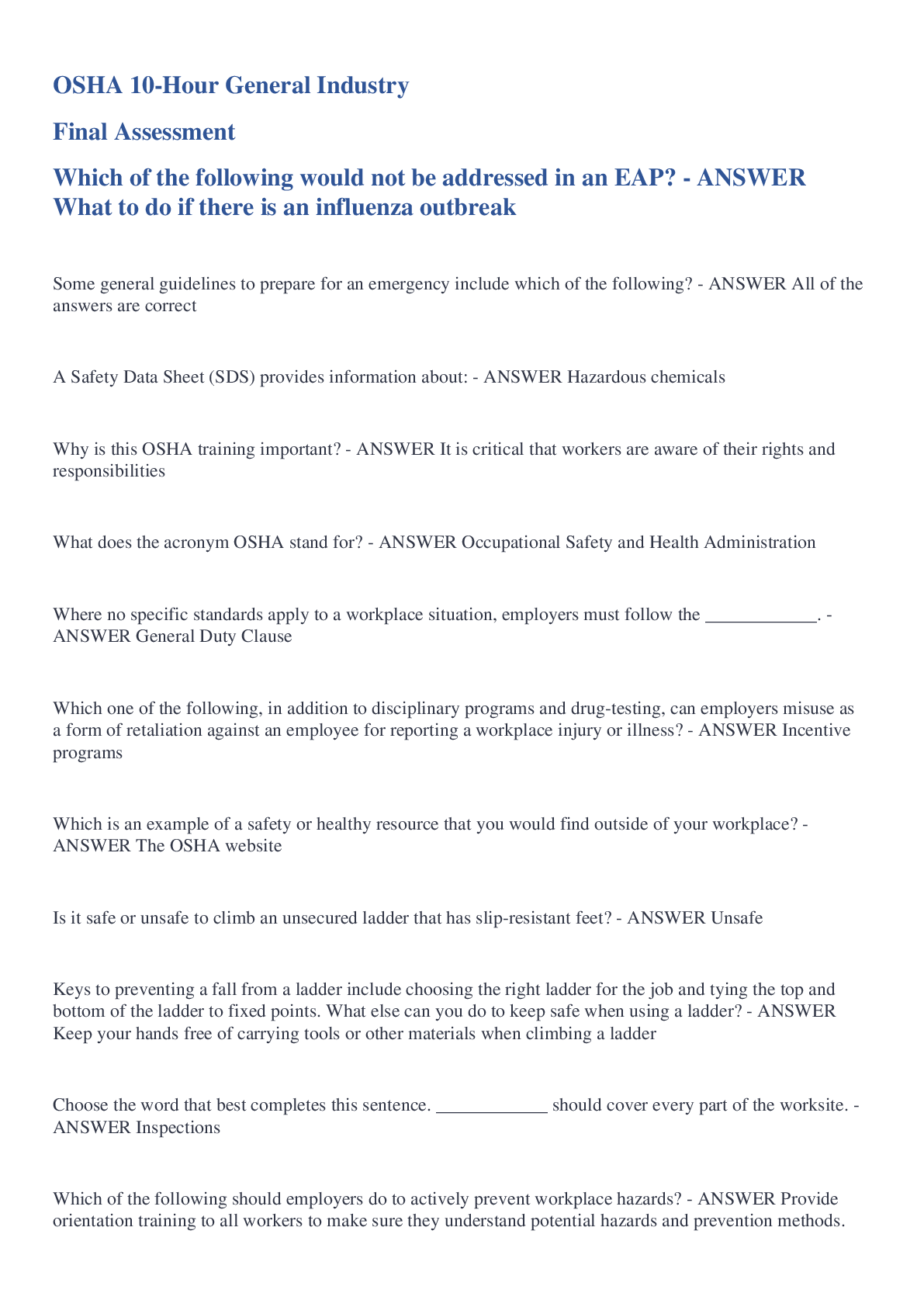*NURSING > QUESTIONS & ANSWERS > NUR 336 - Chapter 42: Fluid, Electrolyte, and Acid-Base Balance - Nursing Test Banks. Questions and (All)
NUR 336 - Chapter 42: Fluid, Electrolyte, and Acid-Base Balance - Nursing Test Banks. Questions and Answers. Rationales Provided.
Document Content and Description Below
NUR 336 - Chapter 42: Fluid, Electrolyte, and Acid-Base Balance - Nursing Test Banks. Questions and Answers. Rationales Provided. NUR 336 - Chapter 42: Fluid, Electrolyte, and Acid-Base Balance - N... ursing Test Banks. Questions and Answers. Rationales Provided. Chapter 42: Fluid, Electrolyte, and Acid-Base Balance Chapter 42: Fluid, Electrolyte, and Acid-Base Balance Potter et al.: Fundamentals of Nursing, 9th Edition MULTIPLE CHOICE 1.A patient has dehydration. While planning care, the nurse considers that the majority of the patient’s total water volume exists in with compartment? a. Intracellular b. Extracellular c. Intravascular d. Transcellular ANS: A Intracellular (inside the cells) Ԩuid accounts for approximately two thirds of total body water. Extracellular (outside the cells) is approximately one third of the total body water. Intravascular Ԩuid (liquid portion of the blood) and transcellular Ԩuid are two major divisions of the extracellular compartment. DIF:Understand (comprehension)REF:935 OBJ escribe the processes involved in regulating extracellular Ԩuid volume, body Ԩuid osmolality, and Ԩuid distribution.TOP lanning 10/15/2016 Chapter 42: Fluid, Electrolyte, and AcidBase Balance | Nursing Test Banks http://boostgrade.info/chapter42fluidelectrolyteandacidbasebalance/ 2/33 MSC: Physiological Adaptation 2.The nurse is teaching about the process of passively moving water from an area of lower particle concentration to an area of higher particle concentration. Which process is the nurse describing? a. Osmosis b. Filtration c. DiԨusion d. Active transport ANS: A The process of moving water from an area of low particle concentration to an area of higher particle concentration is known as osmosis. Filtration is mediated by Ԩuid pressure from an area of higher pressure to an area of lower pressure. DiԨusion is passive movement of electrolytes or other particles down the concentration gradient (from areas of higher concentration to areas of lower concentration). Active transport requires energy in the form of adenosine triphosphate (ATP) to move electrolytes across cell membranes against the concentration gradient (from areas of lower concentration to areas of higher concentration). DIF:Understand (comprehension)REF:936 OBJ escribe the processes involved in regulating extracellular Ԩuid volume, body Ԩuid osmolality, and Ԩuid distribution.TOP:Teaching/Learning MSC: Physiological Adaptation 3.The nurse observes edema in a patient who has venous congestion from right heart failure. Which type of pressure facilitated the formation of the patient’s edema? a. Osmotic b. Oncotic c. Hydrostatic [Show More]
Last updated: 1 year ago
Preview 1 out of 33 pages
Instant download
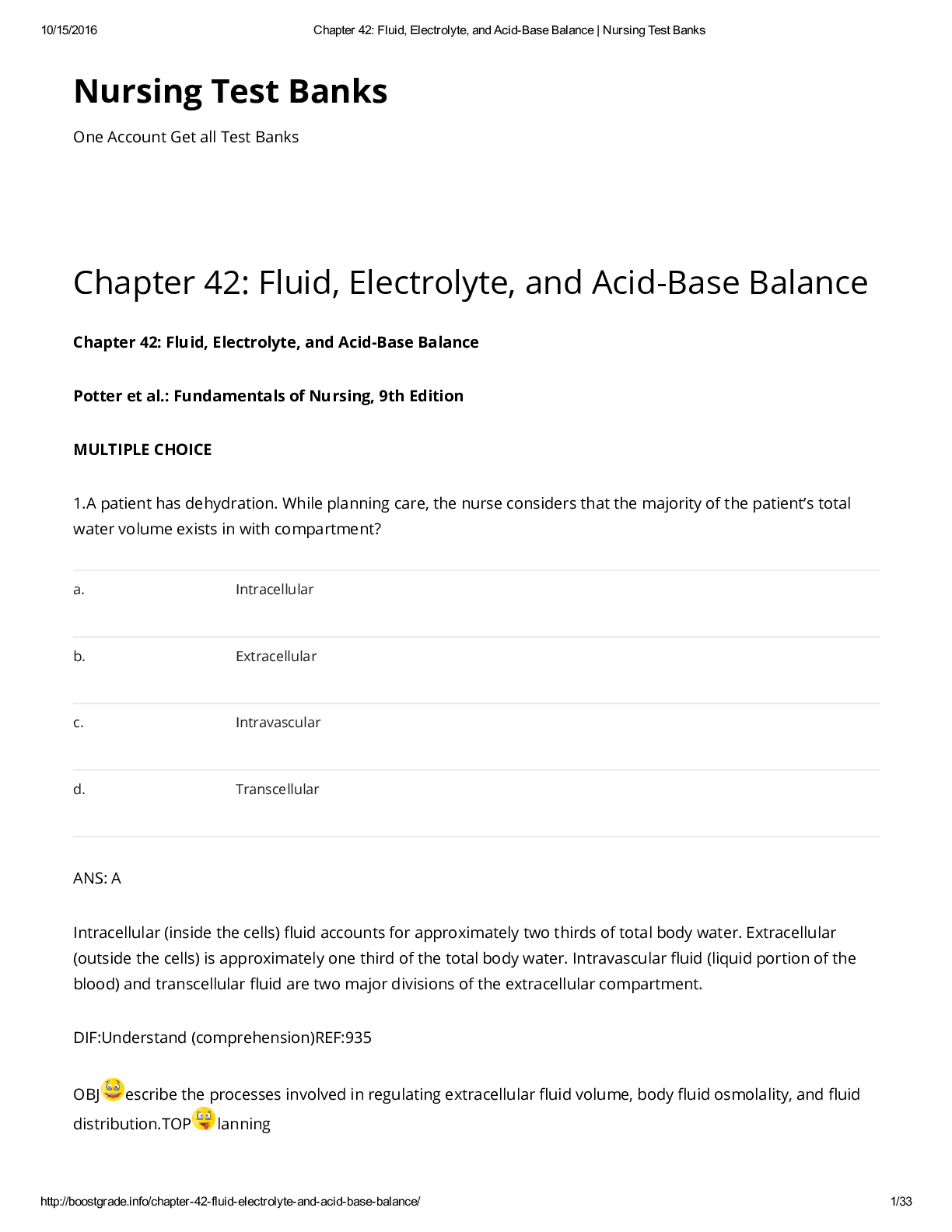
Instant download
Reviews( 0 )
Document information
Connected school, study & course
About the document
Uploaded On
Aug 17, 2021
Number of pages
33
Written in
Additional information
This document has been written for:
Uploaded
Aug 17, 2021
Downloads
0
Views
50

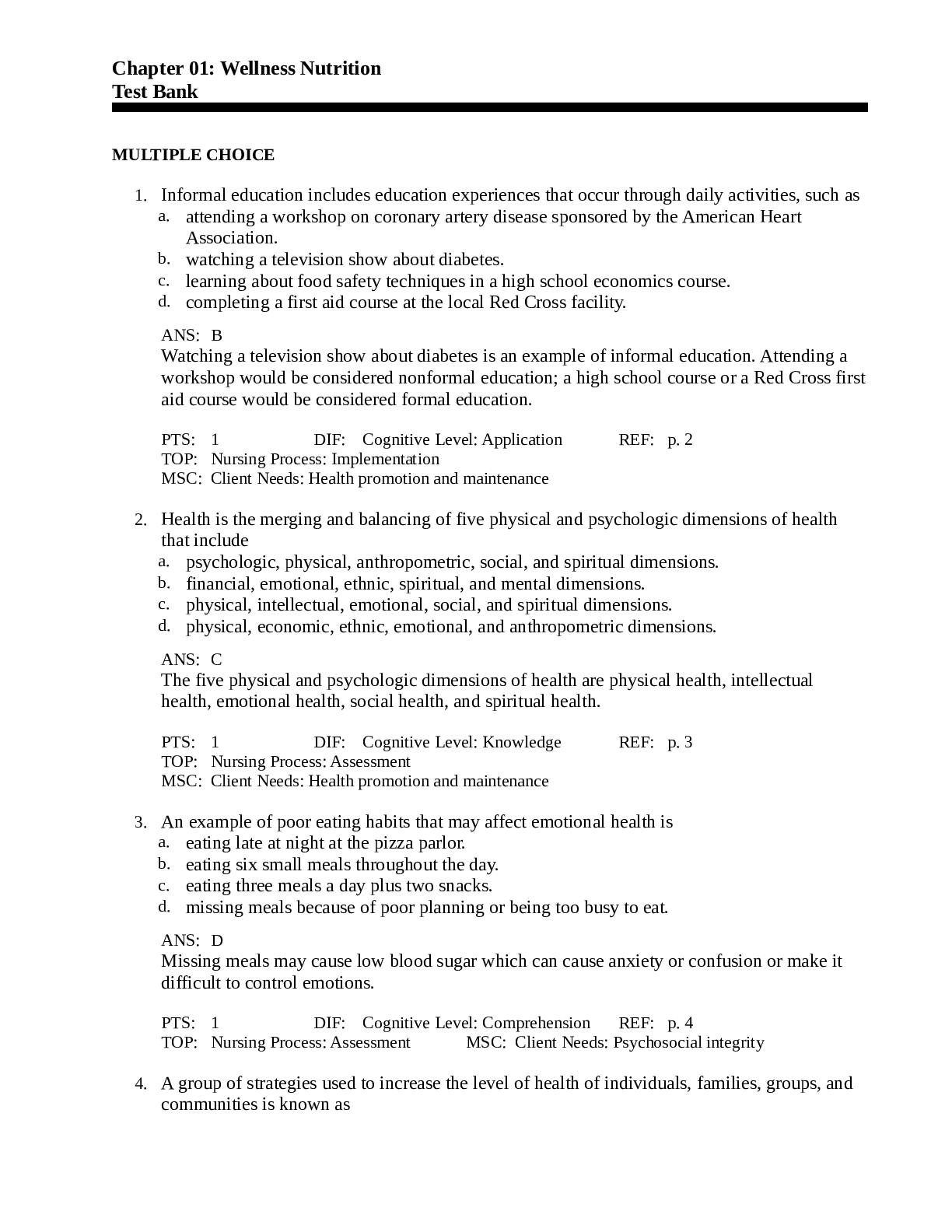

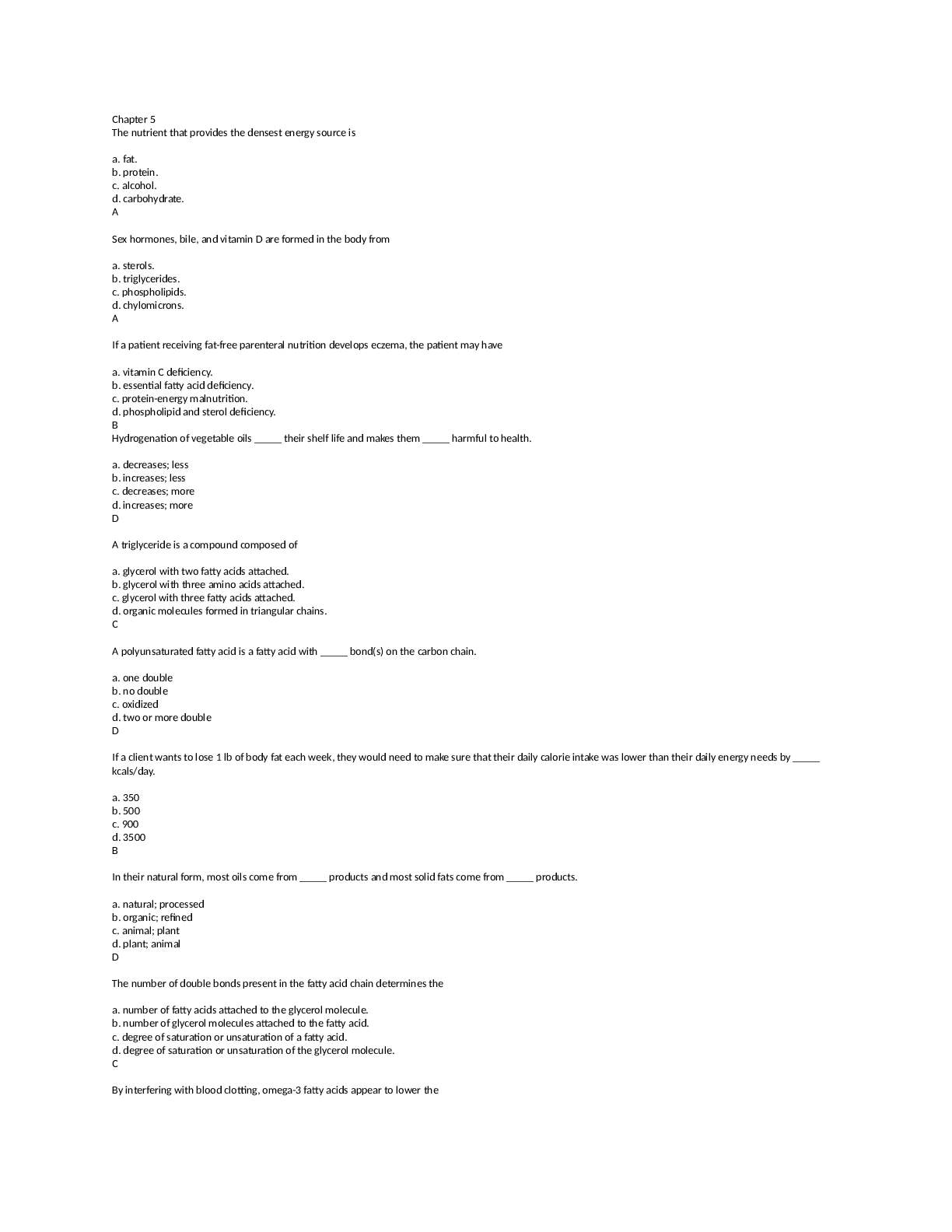


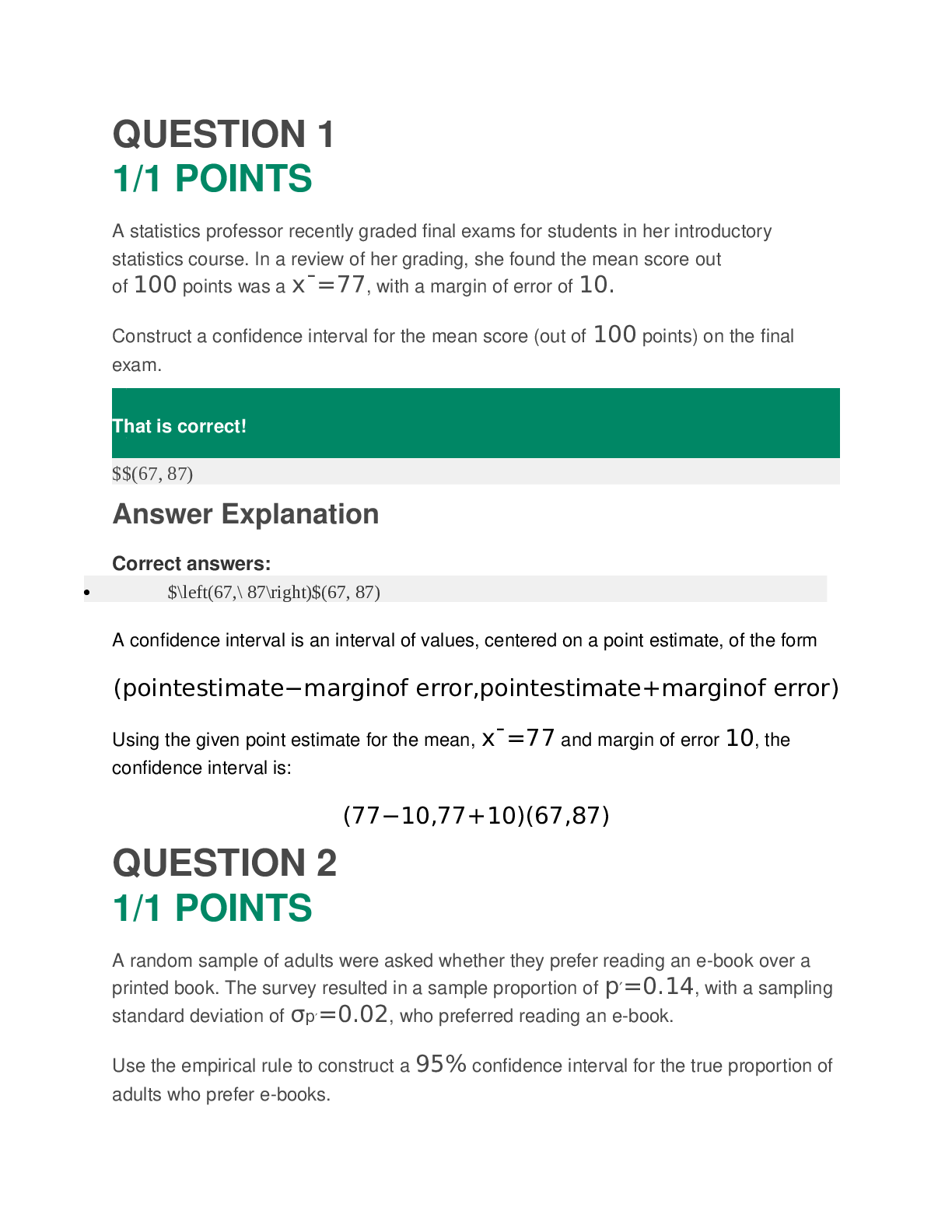




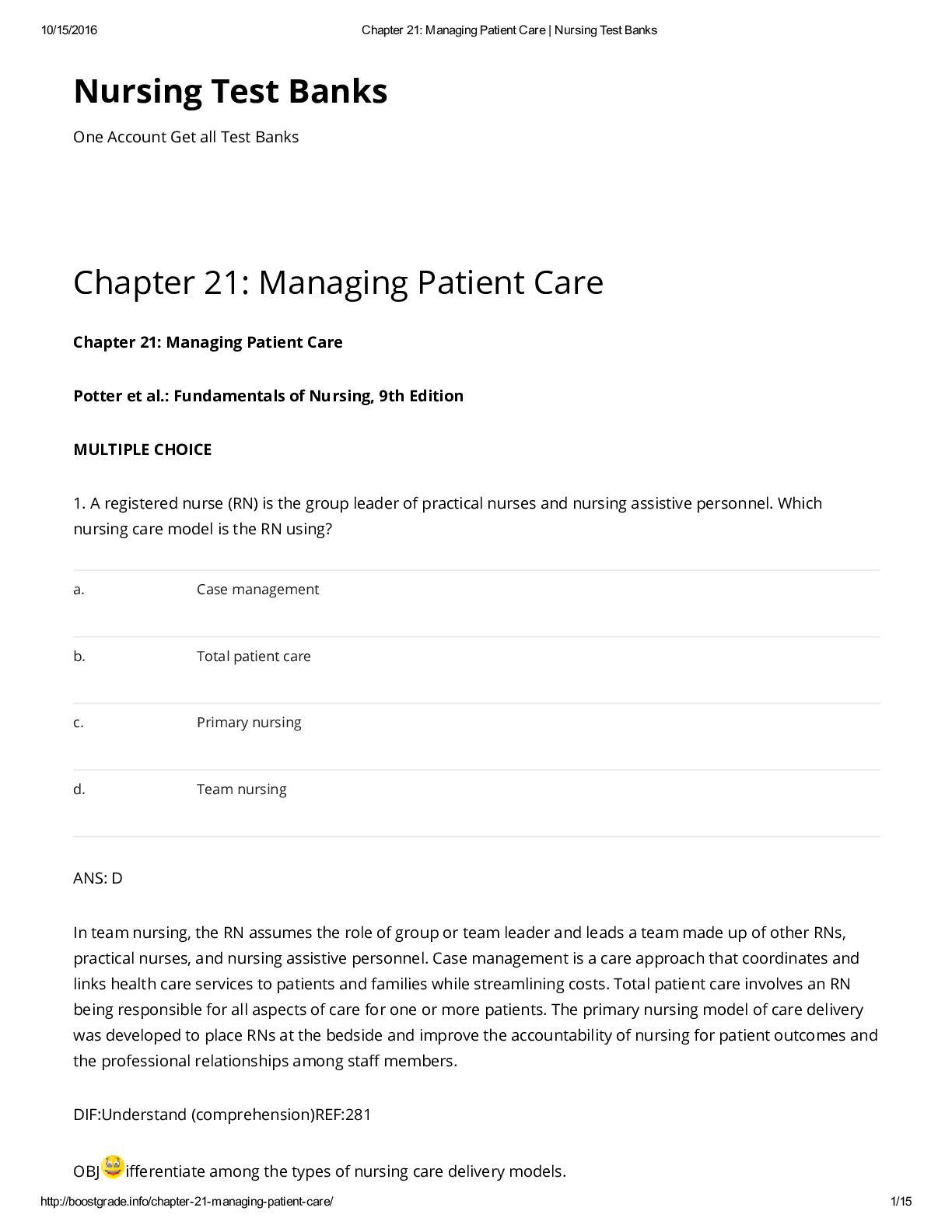
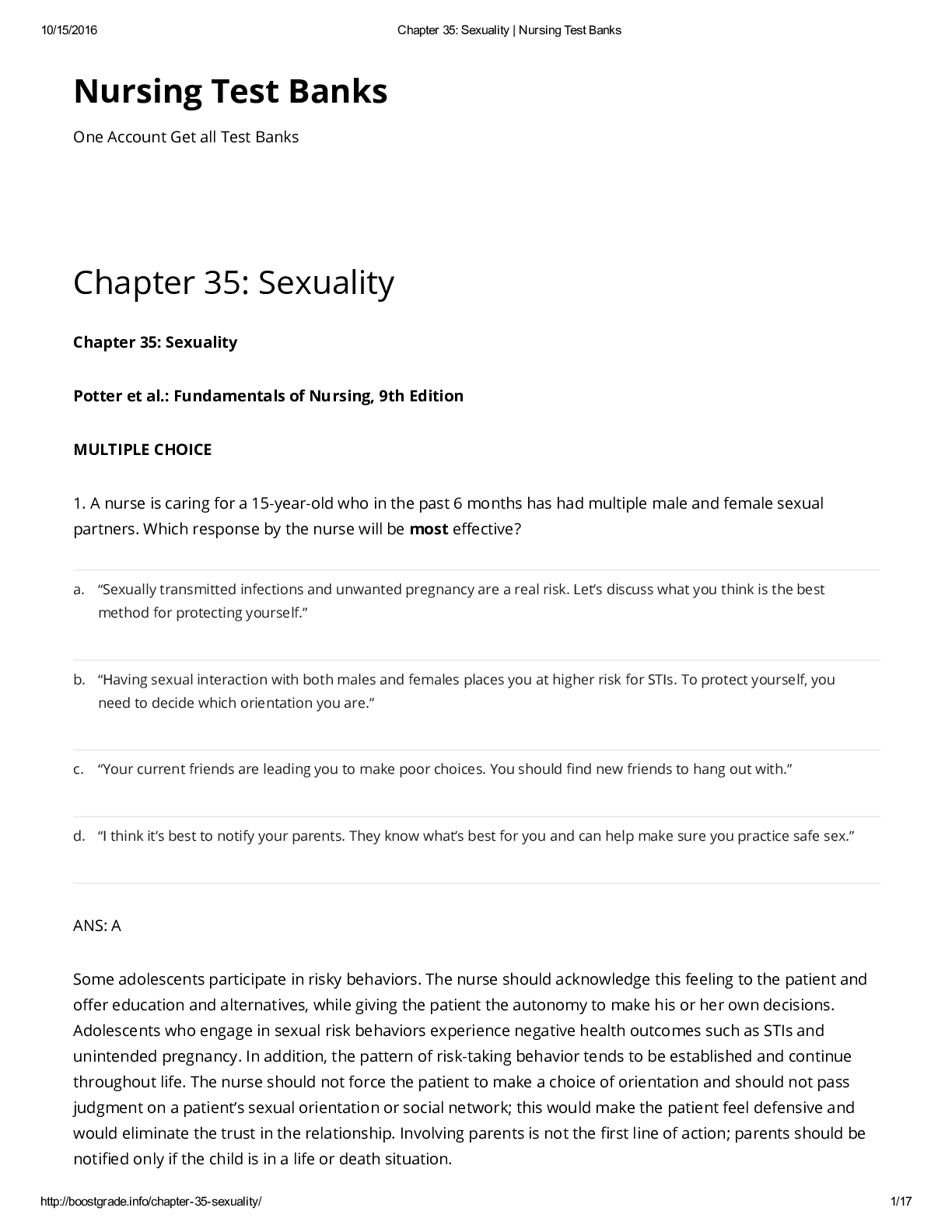




.png)

.png)



